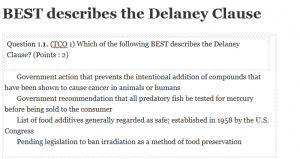| Question 17.17. (TCO 5) What are the three classes of lipids?(Points : 2) |
Monosaccharide, disaccharides, and starch
Triglycerides, sterols, and phospholipids
Sterols, amino acids, and polysaccharides
Phospholipids, glycogen, and dipeptides
Pag 2
| 1. (TCO 6) Per gram, which of the following foods would contain the highest protein content? (Points : 2) |
Cooked carrots
Chicken
Skim milk
Whole-wheat bread |
| Question 2.2. (TCO 6) Well-planned vegetarian diets can reduce the risk of all of the following chronic diseases EXCEPT: (Points : 2) |
obesity.
heart disease.
anemia.
cancer. |
| Question 3.3. (TCO 6) Of the 20 amino acids relevant to the human body, how many are considered essential? (Points : 2) |
They are all essential.
11
Nine
10 |
| Question 4.4. (TCO 6) The absorption of proteins occurs in the: (Points : 2) |
stomach.
small intestine.
large intestine.
liver. |
| Question 5.5. (TCO 7) What is needed to convert Vitamin D to its active state? (Points : 2) |
Calcium consumption
Sunlight
Intestinal bacteria
All of the above |
| Question 6.6. (TCO 7) The malabsorption of fat puts those at risk for developing a: (Points : 2) |
Vitamin C deficiency.
Vitamin D deficiency.
mineral deficiency.
all of the above. |
| Question 7.7. (TCO 7) Due to the fact that newborns do not have enough bacteria in their small intestine to make _______, they are given an injection of this nutrient.(Points : 2) |
Vitamin K
iron
calcium
folate |
| Question 8.8. (TCO 7) The absorption of calcium is inhibited by________. (Points : 2) |
Vitamin C
Vitamin D
oxalic acid
essential fatty acids |
| Question 9.9. (TCO 8) Water has a high heat capacity. What does this term mean? (Points : 2) |
Water is resistant to changes in temperature.
Water heats up or cools down very quickly.
Water provides a useful source of stored kilocalories.
Water transports the energy-yielding nutrients throughout the body. |
| Question 10.10. (TCO 8) Which organ is primarily responsible for maintaining fluid balance? (Points : 2) |
Small intestine
Kidneys
Liver
Pancreas |
| Question 11.11. (TCO 8) What is the primary reason why we sweat? (Points : 2) |
Maintain blood volume
Maintain sodium balance
Excrete waste products
Regulate body temperature |
| Question 12.12. (TCO 8) Which of the following stimulates the thirst mechanism? (Points : 2) |
Increased concentration of solutes in the blood
Elevated blood volume and pressure
Lubrication of the mouth and throat tissues
All of these |
| Question 13.13. (TCO 9) Which of the following BEST describes an eating disorder? (Points : 2) |
A psychiatric condition that requires a physician’s diagnosis
Any condition in which one’s eating behavior changes more than six times per year
General term that describes a variety of abnormal or atypical eating behaviors
Any behavior in which one attempts to reduce one’s body weight below a healthy range |
| Question 14.14. (TCO 9) What is the standard criterion used for diagnosing an eating disorder? (Points : 2) |
Analysis of atypical food behavior
Disordered eating questionnaire
Behavioral Risk Factor Surveillance System
Diagnostic and Statistical Manual of Mental Disorders |
| Question 15.15. (TCO 9) In which of the following events would carbohydrate loading be the most beneficial? (Points : 2) |
Weight lifting
Baseball game
Cross country skiing
100-yard dash |
| Question 16.16. (TCO 10) What is a teratogen? (Points : 2) |
Any substance that can cause a birth defect
The name of a pre-term baby
The fertilized egg
The process of implantation of the fertilized egg |
| Question 17.17. (TCO 10) Due to the fact that the demand for red blood cells increases during pregnancy, what nutrient is needed regularly? (Points : 2) |
Calcium
Iron
Folate
All of the above |
| Question 18.18. (TCO 10) All of the following are physiological changes that typically occur with aging EXCEPT: (Points : 2) |
decreased lean body mass.
decreased bone density.
decreased fat mass.
decreased immune function. |
|
|
